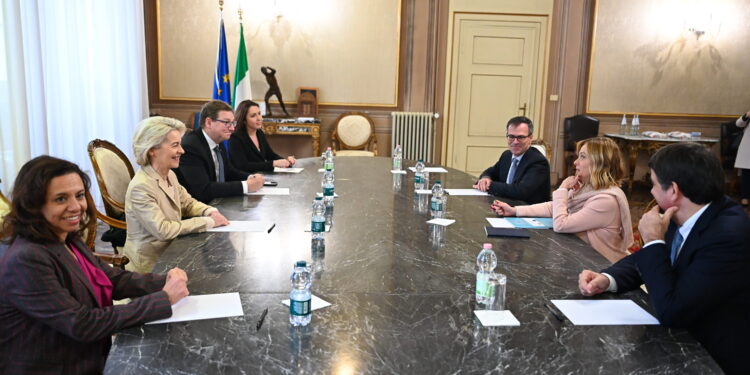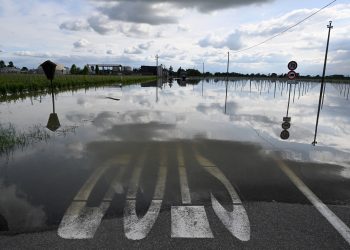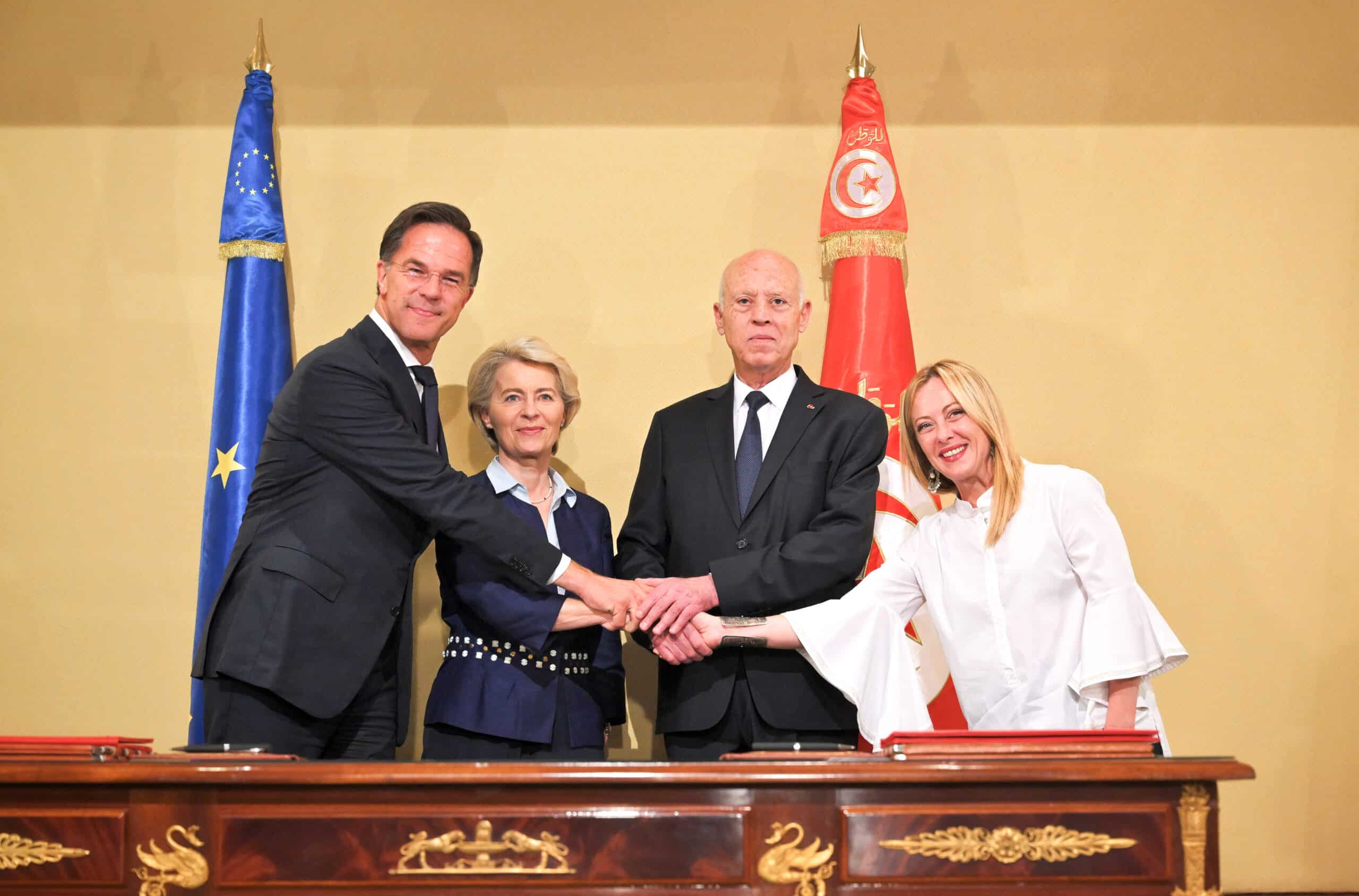Brussels – Eight months after the floods of early May 2023, a return to the Emilia-Romagna region affected by the consequences of climate change, to take stock of the allocations made and those still to be put in place: The President of the European Commission, Ursula von der Leyen, visited Forlì today (Jan. 17) to meet with the Italian Premier, Giorgia Meloni, and discuss the EU funds that can still be allocated to support the flooded areas. “It is moving to be back in Emilia-Romagna, I clearly remember the visit in May last year and I will never forget the devastation that the floods caused,” were the EU executive’s number one first words to the press at the end of her nearly hour-long meeting with Meloni.

The heart of the discussion between the two leaders—and consequently of the press conference—was precisely on the question of the funds Emilia-Romagna has received and those it may receive. First and foremost, those from the EU Solidarity Fund: “You have received an advance of 95 million euros for emergency cleanup and restoration operations, much more will arrive in the coming months,” von der Leyen assured while waiting for the definition of the allocations and disbursements for the 2024 budget of the Union’s device against the consequences of natural disasters. Added to these are the funds for Agriculture, with “60 million euros already disbursed from the emergency reserve” to support farmers “particularly affected” by the floods in Emilia-Romagna, but also the “important” reform of the Cohesion funds: “We have included a new milestone in the revised plan that allows us to redirect funds for reconstruction and disaster response.” With all these tools, “we can help revitalize communities and cities affected by disasters, such as in 2017 after the earthquake in central Italy,” she strongly emphasized.
There is one last piece, one of the most important ones, on the table of the authorities in Brussels and Rome: the one relating to the National Recovery and Resilience Plan (NRRP). “The revision was said not to be possible, and instead it was not only possible but above all, necessary,” claimed PM Meloni, speaking of the changes approved by the EU executive that also includes 1.2 billion euros to the flooded areas in Emilia-Romagna. Words confirmed by President von der Leyen, who called the review “successful” and the cooperation “excellent” between the Commission and the government: “We want to help you get back on your feet and become more resilient,” she assured, again promising that “more help is on the way.” On this front, the leader of the EU executive wanted to dwell for a few minutes, stressing that “Italy is on track for the implementation of the NRRP,” particularly after the disbursement of the fourth instalment at the end of December: “It means that half of the NRRP has been disbursed, that’s very good news.” The priority now must be investments in clean technologies and renewable sources, because—as von der Leyen pointed out in Forli—”extreme weather events will become even more frequent.” One example was precisely the floods that hit Emilia-Romagna: “We must fight and prevent climate change, what is good for the climate is also good for our economies.”
The Solidarity Fund Beyond Emilia-Romagna
 The Solidarity Fund is an off-budget facility that allows up to €500 million to be mobilized annually—in addition to unspent funds from the previous year—to cover part of the cost of reconstruction. Member states affected by natural disasters can request its activation from the Commission within 12 weeks of the date of the first damage detected, attaching an estimate of the damage to the application. This provision allows for emergency interventions such as the “immediate restoration of infrastructure functioning in the energy, telecom, transport, health, and education sectors.”
The Solidarity Fund is an off-budget facility that allows up to €500 million to be mobilized annually—in addition to unspent funds from the previous year—to cover part of the cost of reconstruction. Member states affected by natural disasters can request its activation from the Commission within 12 weeks of the date of the first damage detected, attaching an estimate of the damage to the application. This provision allows for emergency interventions such as the “immediate restoration of infrastructure functioning in the energy, telecom, transport, health, and education sectors.”
The 2023 funds were almost completely absorbed by three natural disasters in Italy (the Marche floods in September 2022), Romania (drought in 2022), and Turkey (earthquakes in February 2023). Italy’s request for the floods in Emilia-Romagna will be part of the 2024 Solidarity Fund budget, but also for the floods in Slovenia in early August—the worst natural disaster in its history—and those in Greece a month later in the Thessaly region. Like Italy, Slovenia also received an advance of 100 million euros. Given the fact that the €500 million reserve is being depleted every year, the EU Parliament proposed doubling the amount to €1 billion per year by raising the ceilings for allocations. Instead, the EU Commission has proposed as part of the proposal to revise the EU multi-year budget 2021-2027 to increase appropriations for the Solidarity and Emergency Aid Reserve (SEAR) by €2.5 billion, to be distributed for the last four remaining years of the programming period between its two instruments, the Solidarity Fund and the Emergency and Aid Reserve.
Since its activation in 2002 and until 2022, the Solidarity Fund has mobilized over 8.2 billion euros in total for 127 disasters—107 of which are related to extreme weather phenomena—in 25 member states, plus the United Kingdom and 3 accession states (Albania, Montenegro, and Serbia). Of these funds, nearly one-third (just over 3 billion) went to Italy, almost twice as much as second-best recipient Germany (1.6 billion). Also above the billion mark is Croatia, while less was allocated to France (403 million), the United Kingdom (222 million) and Austria (213 million). The smallest beneficiaries at the moment are Malta (961,000 euros), Albania (900,000), and Montenegro (199,000), while Finland and Denmark are the only EU member states that in 20 years have never applied for nor received any allocation from the EU Solidarity Fund.
English version by the Translation Service of Withub





![Una donna controlla le informazioni sul cibo specificate sulla confezione [foto: archivio]](https://www.eunews.it/wp-content/uploads/2014/12/Etichette-alimentari.jpg)

